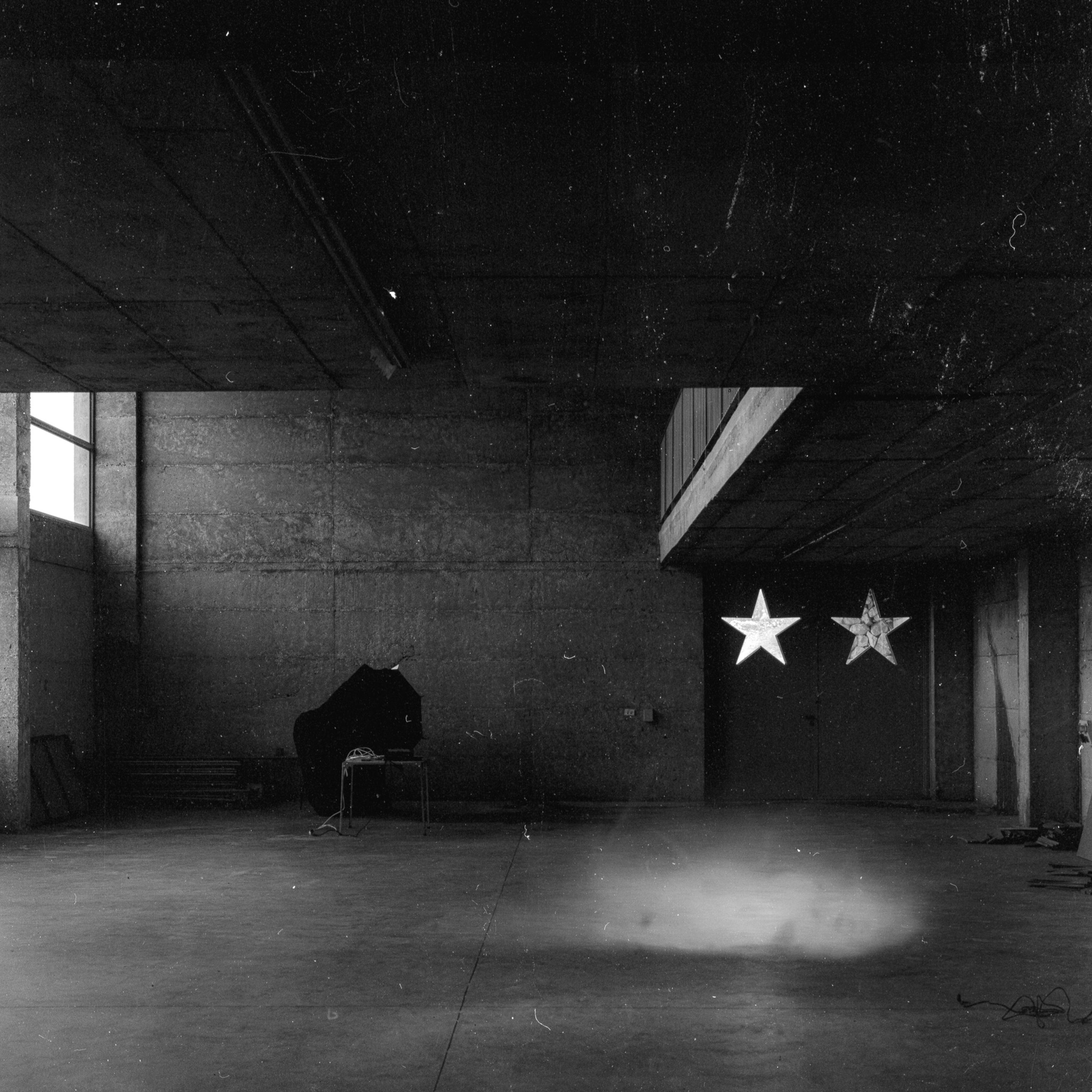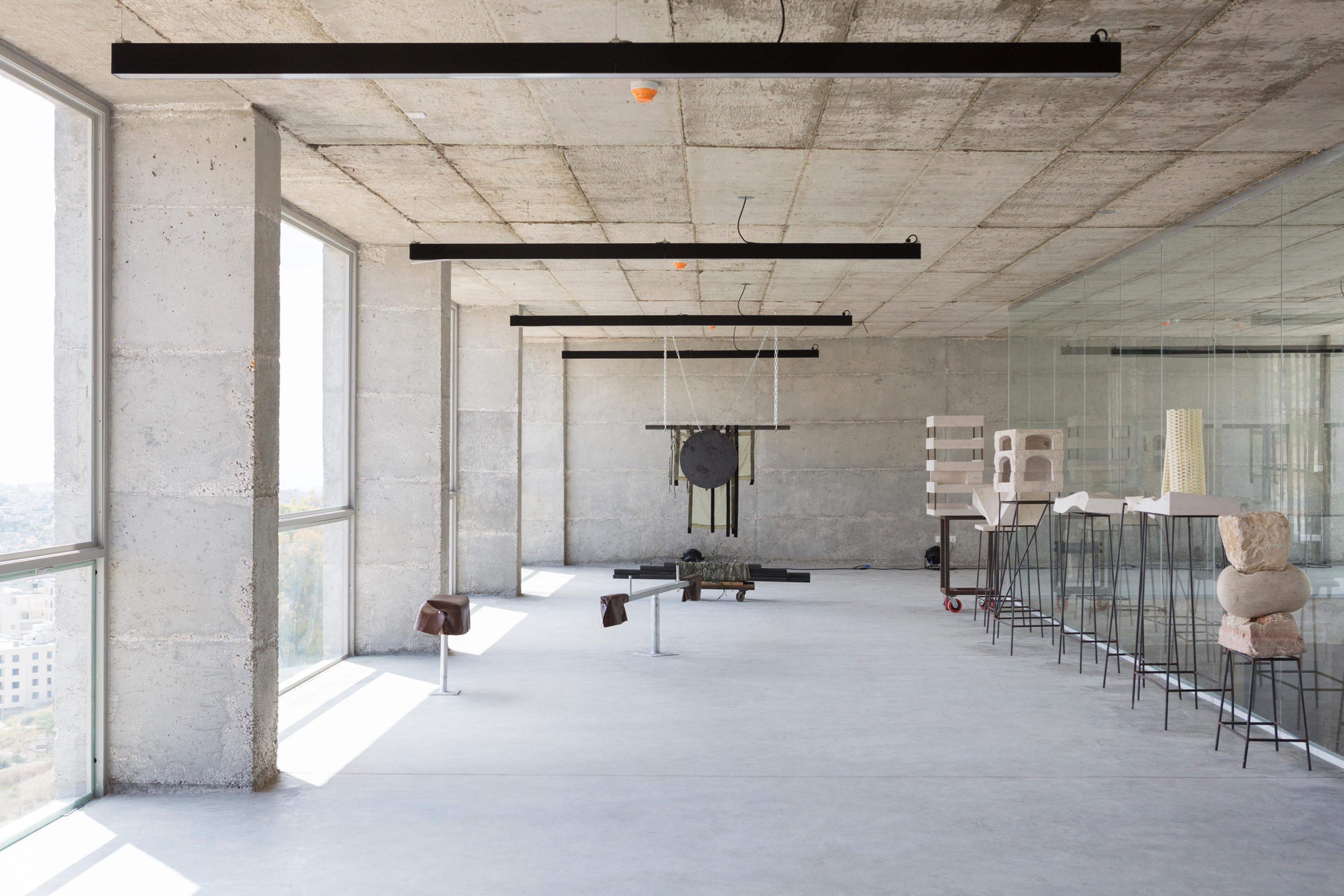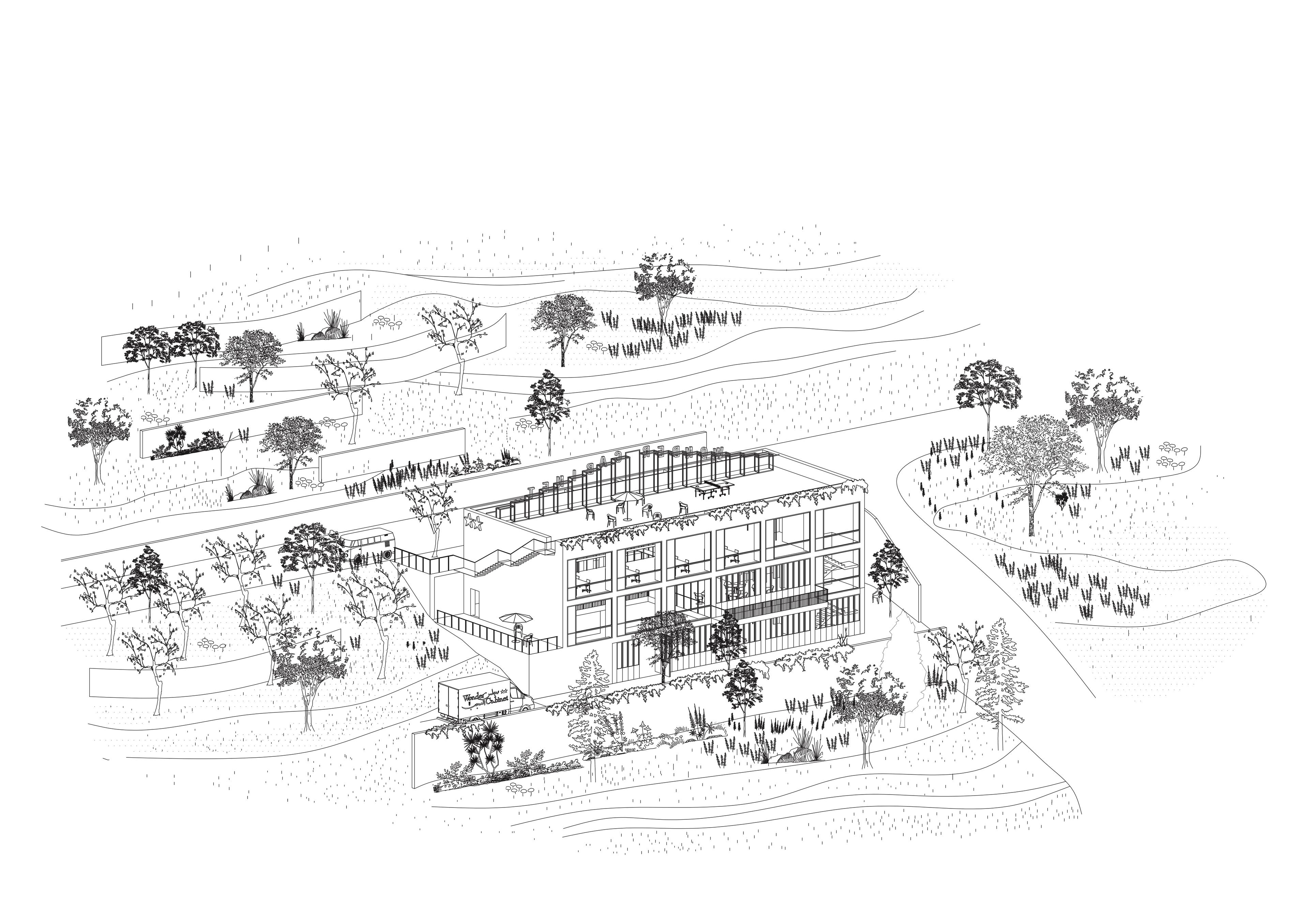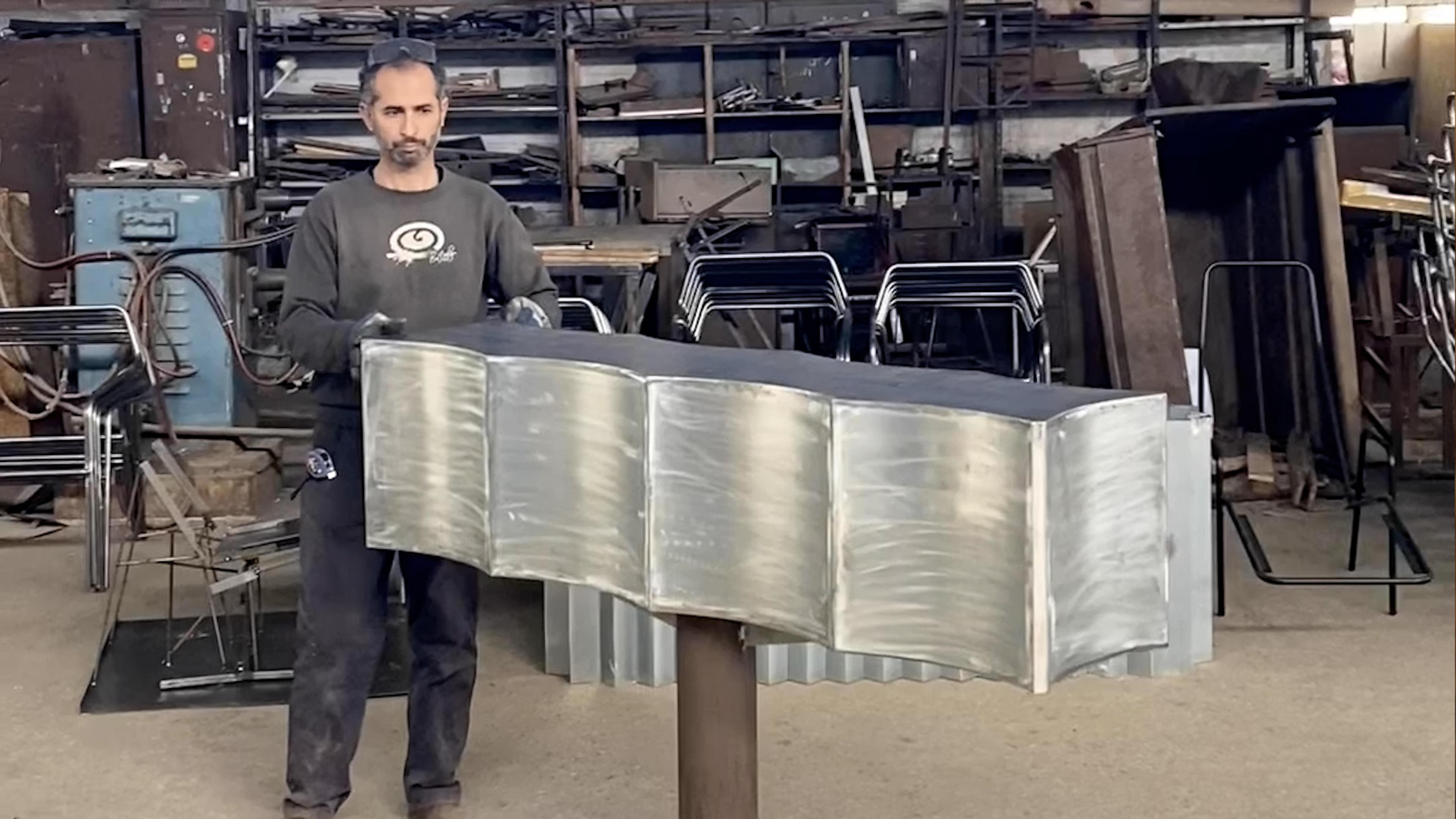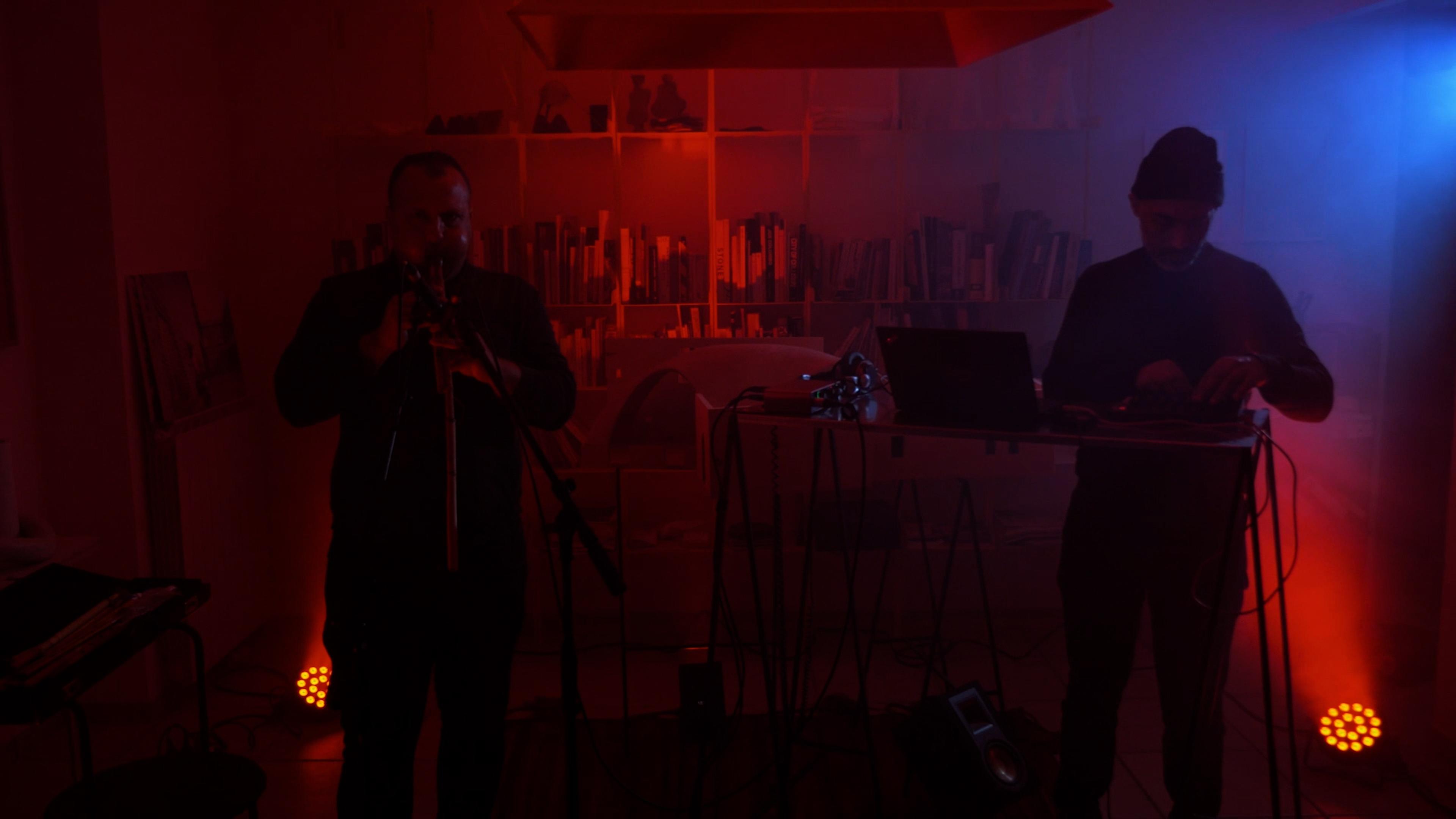The following is a layered composition of sound and visuals that presents our architectural practice, sonic explorations, cultural productions and collective collaborations.
You can scroll through the timeline, or sit back and enjoy the full length cut. For the best user experience, we recommend wearing headphones.
The Wonder Cabinet
The Wonder Cabinet is a production-driven cultural space founded in Bethlehem, Palestine by Elias and Yousef Anastas.
Each stainless steel letter of “W-O-N-D-E-R C-A-B-I-N-E-T” spins above the main facade as a weather vane for which Bishara alHadweh fabricated ball bearing aluminium tailor-made mechanical devices that ensure a constant smooth rotation of the letters. Underneath it, a rough concrete grinded pediment and a succession of steel and glass facades made by Local Industries from which the internal space can be seen as well as a glimpse of the facing valley on the other side of the building. In the building, three stories communicate through a cross sectional voids linking a triple heighted production space, artist studios, and a street esplanade used for ephemeral setups.
The building overlooks a valley whose climbing landscape is suddenly spoiled by the view on a settlement that used to be a forest twenty-something years ago. When entering the building on the north western side, the facades - made out of large fixed glass panels - direct the visitors’ eyes towards the hilly Jordanian horizon. The plain timber windows are hidden behind the concrete columns that support a beamless horizontal slab. While the partition-less internal spaces are bathed with light, the dimmed staircase only catches light through its protruding 80cm wide portholes that frame common and ever changing parts of the surrounding landscapes. They have been formed and rolled by Mohammad Husni, a blacksmith specialized in the fabrication of gigantic factory steel silos. Most of the lighting fixtures are made out of galvanized steel casings designed by Local Industries, laser cut in Hebron, bent in Beit Sahour and installed with caution by a local hero, Issa Haroun.
The wonder cabinet is first and foremost an invitation to explore the building and its surroundings through sound, discussions, objects, experimentations, food and the encountering of disciplines with each other.
The Wonder Cabinet
The Wonder Cabinet is a production-driven cultural space founded in Bethlehem, Palestine by Elias and Yousef Anastas.
Each stainless steel letter of “W-O-N-D-E-R C-A-B-I-N-E-T” spins above the main facade as a weather vane for which Bishara alHadweh fabricated ball bearing aluminium tailor-made mechanical devices that ensure a constant smooth rotation of the letters. Underneath it, a rough concrete grinded pediment and a succession of steel and glass facades made by Local Industries from which the internal space can be seen as well as a glimpse of the facing valley on the other side of the building. In the building, three stories communicate through a cross sectional voids linking a triple heighted production space, artist studios, and a street esplanade used for ephemeral setups.
The building overlooks a valley whose climbing landscape is suddenly spoiled by the view on a settlement that used to be a forest twenty-something years ago. When entering the building on the north western side, the facades - made out of large fixed glass panels - direct the visitors’ eyes towards the hilly Jordanian horizon. The plain timber windows are hidden behind the concrete columns that support a beamless horizontal slab. While the partition-less internal spaces are bathed with light, the dimmed staircase only catches light through its protruding 80cm wide portholes that frame common and ever changing parts of the surrounding landscapes. They have been formed and rolled by Mohammad Husni, a blacksmith specialized in the fabrication of gigantic factory steel silos. Most of the lighting fixtures are made out of galvanized steel casings designed by Local Industries, laser cut in Hebron, bent in Beit Sahour and installed with caution by a local hero, Issa Haroun.
The wonder cabinet is first and foremost an invitation to explore the building and its surroundings through sound, discussions, objects, experimentations, food and the encountering of disciplines with each other.

